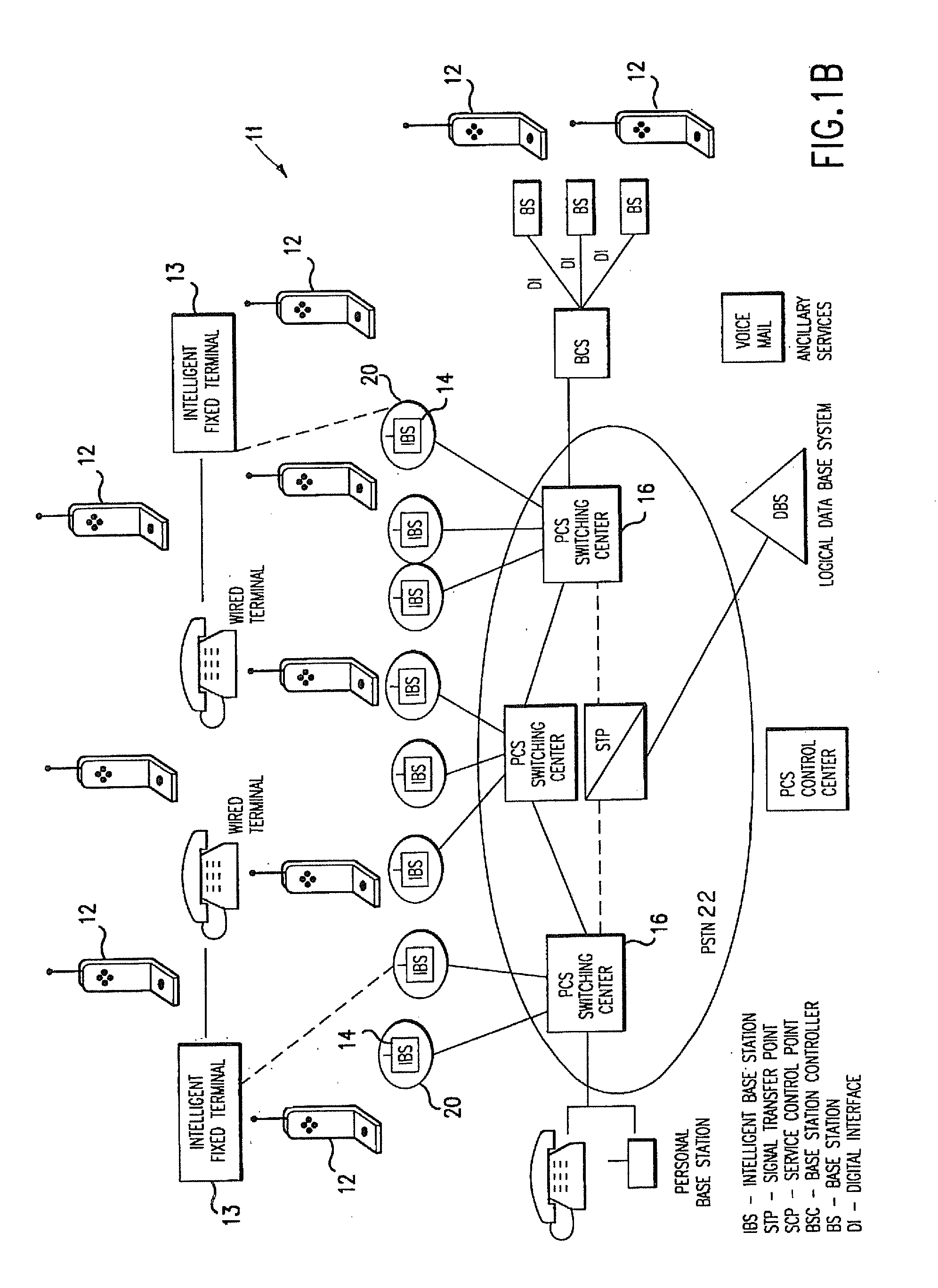Wireless Digital Personal Communications System Having Voice/Data/Image Two-Way Calling and Intercell Hand-Off Provided Through Distributed Logic Resident in Portable Handset Terminals, Fixed Terminals, Radio Cell Base Stations and Switched Telephone Network
a personal communication system and digital technology, applied in the field of wireless digital personal communications systems, can solve the problems of not being able to fully meet the demand for these new types of pcs services, current radio equipment and related services currently offered, cordless telephones, radio paging, etc., to achieve the effect of expanding the number and types of wireless telecommunication services, improving flexibility and functionality, and providing a broad set of standardized functions
- Summary
- Abstract
- Description
- Claims
- Application Information
AI Technical Summary
Benefits of technology
Problems solved by technology
Method used
Image
Examples
Embodiment Construction
[0054]The personal communications system (PCS) of the present invention utilizes Integrated Services Digital Network (ISDN), Advanced Intelligent Network Switches (AIN), Service Control Point (SCP), data base, and radio interfaces for various elements of the system. Accordingly, the following enumerated Bellcore technical references pertaining to ISDN, Advanced Intelligent Network Switches (AIN), Service Control Point (SCP), are needed, but not limited to, the operation of the personal communications system of the present invention and are hereby incorporated by reference, namely: (i) “Advanced Intelligent Network 0.1 Switching Systems Generic Requirements” (TR-NWT-001284); (ii) “Advanced Intelligent Network 0.2 Switching Systems Generic Requirements” (TA-NWT-001298); (iii) “Advanced Intelligent Network 0.1 Switch Service Control Point Application Protocol Interface Generic Requirements” (TR-NWT-001285); (iv) “Advanced Intelligent Network 0.2 Switch Service Point Adjunct Interface R...
PUM
 Login to View More
Login to View More Abstract
Description
Claims
Application Information
 Login to View More
Login to View More - R&D
- Intellectual Property
- Life Sciences
- Materials
- Tech Scout
- Unparalleled Data Quality
- Higher Quality Content
- 60% Fewer Hallucinations
Browse by: Latest US Patents, China's latest patents, Technical Efficacy Thesaurus, Application Domain, Technology Topic, Popular Technical Reports.
© 2025 PatSnap. All rights reserved.Legal|Privacy policy|Modern Slavery Act Transparency Statement|Sitemap|About US| Contact US: help@patsnap.com



